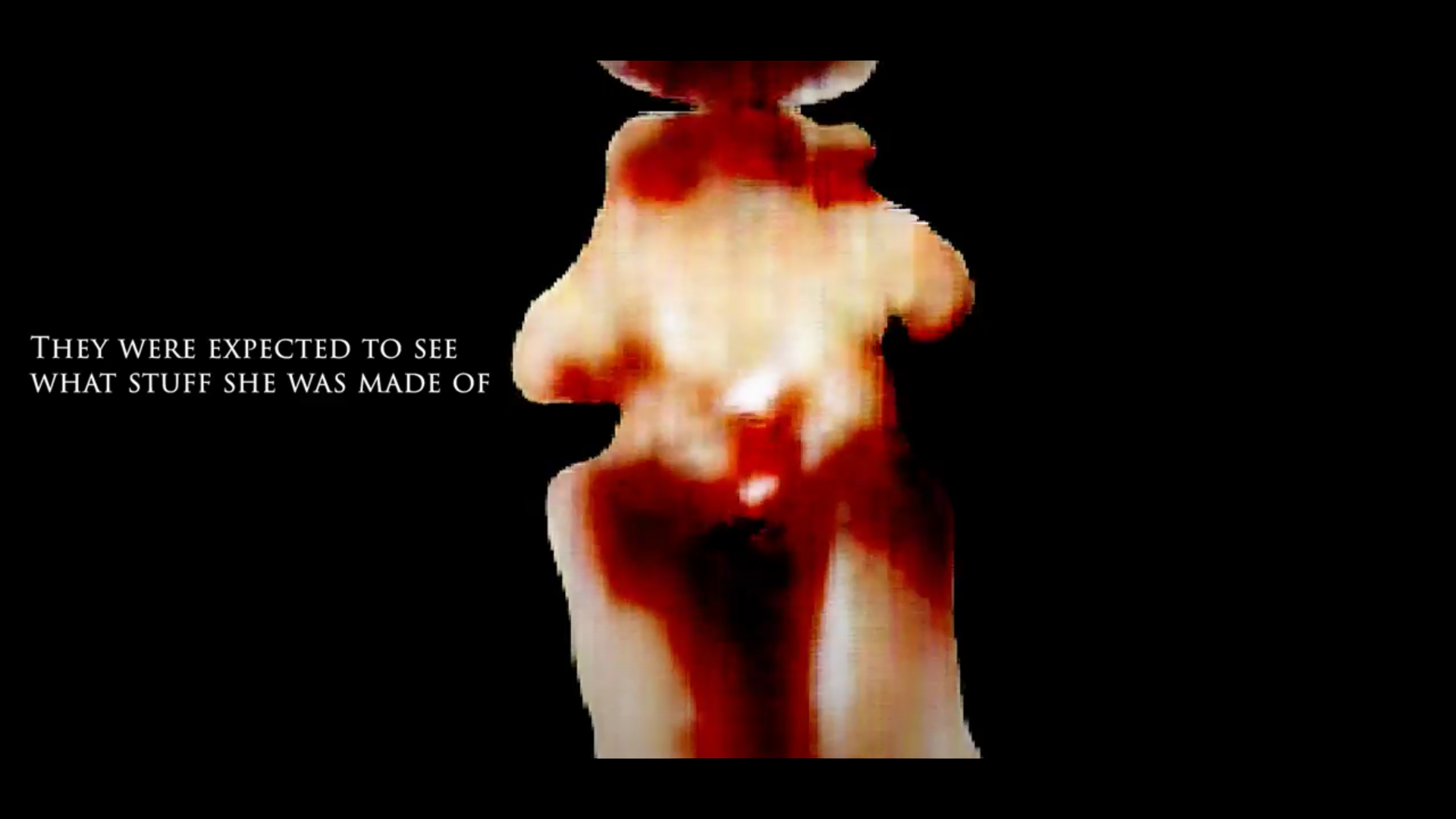They were expected to see what stuff she was made of' is an installation, the focal point of which is a screen showing a short looping film. The pace of the video is slow, long shots pan over bodily forms, and linger on skeletal figures. The video is overlaid with text which draws on tropes of gothic literature, specifically distrust of medical advancement and rouge scientists. The text questions the fidelity of medical imaging, including x-rays and MRIs, which in turn raises questions about the fidelity and objectivity of the images they produce, and what impact these images have on the body figured through these procedures. Accompanying the screen are two free standing steel frames. Within the frames three acrylic panels are hung, etched with patterns which suggest anatomical illustration - one panel looks like a rib cage, another could be a pelvis or a block of flesh.
Tindle has used several machine learning algorithms to create the imagery featured in this work, including StyleGan2 trained on real X-rays, a pix2pix model for which she created a virtual dataset using blender and a Style Transfer model based on real X-rays, PET and MRI scans scraped from google images.

Katie Tindle is a contemporary artist, curator and educator. With a background in sculpture, her practice often uses narrative, spoken word, moving image and multimedia installation. This work centres on wellness and illness, and the industries borne out of their perceived dichotomy i.e. in particular biosensing and self tracking technologies, and the wellness/fitness industries. Her multidisciplinary, creative research practice is concerned with medicine, feminist thought and data justice - particularly in relationship with how the body can be figured and imaged using scanning. Tindle’s curatorial practice primarily focuses on democratisation and demystification of art spaces. Tindle holds a BA hons in Fine Art from Central Saint Martins, UAL, where she now teaches on the BA Fine Art undergraduate programme, and also works for the Society for Research into Higher Education.
